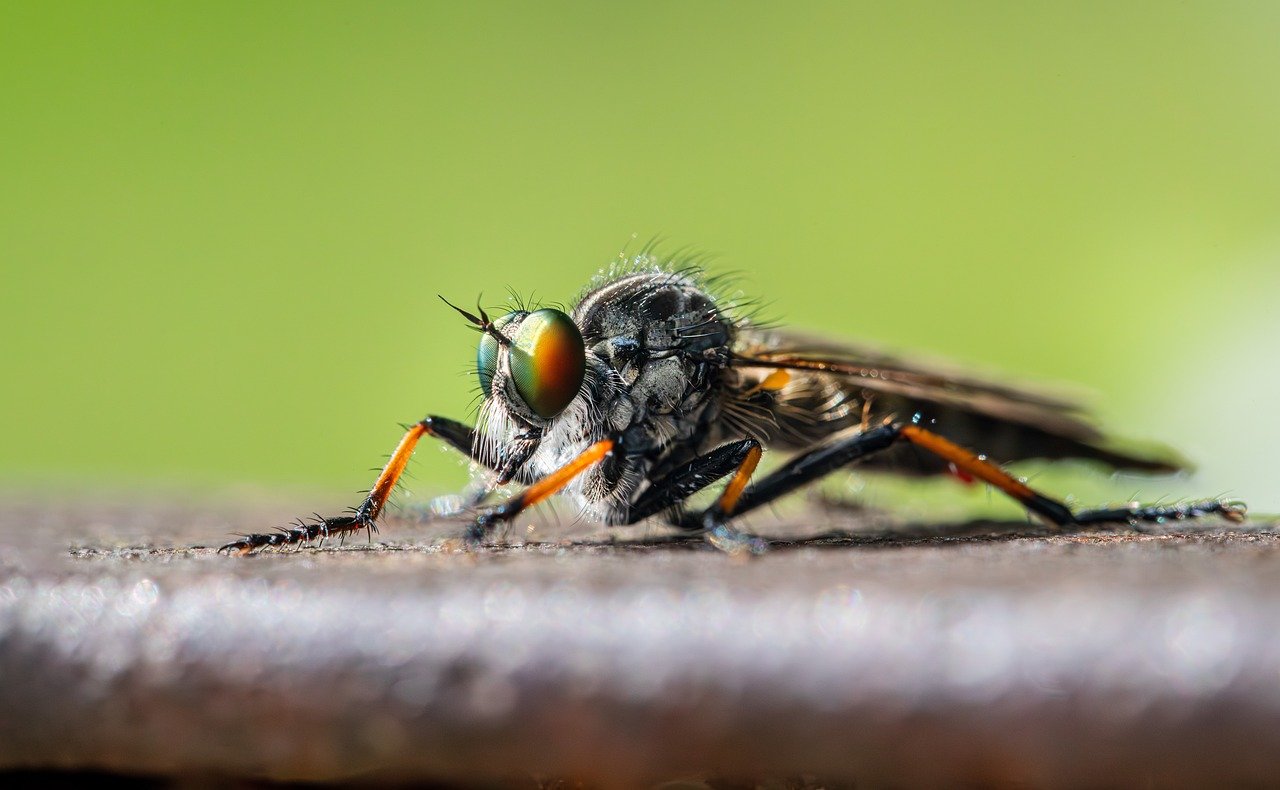The Common Awl Robberfly (Neoitamus cyanurus) is a species of robber fly belonging to the Asilidae family, known for its predatory nature and distinctive appearance. This species is widely distributed across Europe and can often be found in various habitats during the warmer months.
Description
- Size:
- The Neoitamus cyanurus is a medium-sized robber fly, with adults typically measuring around 12 to 18 millimeters in length.
- Appearance:
- Body: The body is elongated and slender, with a characteristic metallic blue or greenish sheen on the abdomen, which gives the species its name (cyanurus meaning “blue tail”).
- Thorax: The thorax is usually dark with a slightly iridescent quality, often appearing black or dark brown. It is covered with short, bristly hairs.
- Abdomen: The abdomen is distinctly narrow and tapers toward the end, with a metallic blue-green coloration that is particularly noticeable in males.
- Wings: The wings are clear and slightly iridescent, often held open when the fly is at rest. They have a slight brownish tint, especially near the veins.
- Legs: The legs are long and robust, covered with bristles that aid in capturing prey. The legs are usually dark brown or black with lighter joints.
- Eyes: Neoitamus cyanurus has large, compound eyes typical of robber flies, providing it with excellent vision for detecting prey.
Behavior and Ecology
- Habitat:
- This species is commonly found in woodland edges, clearings, hedgerows, and meadows. It prefers areas with plenty of sunlight, where it can bask and hunt effectively. During the summer, Neoitamus cyanurus can often be seen perched on leaves or stems, waiting for passing prey.
- Diet:
- Predatory Behavior: Like other robber flies, Neoitamus cyanurus is a formidable predator. It hunts by perching in a strategic location and then launching an aerial attack on passing insects.
- Feeding: After capturing its prey mid-flight, the robber fly uses its powerful proboscis to inject digestive enzymes into the prey, which liquefy the insides. The fly then sucks out the contents, leaving behind the empty exoskeleton.
Lifecycle
- Eggs:
- Females lay their eggs on or near the ground, often in decaying organic matter or soil.
- Larvae:
- The larvae are also predatory, feeding on other insect larvae and small invertebrates within the soil or decaying wood. They are less visible than adults and spend most of their time hidden underground.
- The larval stage can last several months to over a year, depending on environmental conditions.
- Pupation:
- The larvae eventually pupate within the soil, undergoing metamorphosis before emerging as adult flies.
- Adults:
- Adults are most active during the summer months, from late spring to early autumn. They are often seen basking in the sun on foliage or hunting for prey.
Ecological Role
- Predator:
- Neoitamus cyanurus plays an important role in controlling insect populations. It preys on a variety of other insects, including flies, bees, beetles, and wasps, helping to maintain ecological balance.
Conservation Status
- Distribution:
- Neoitamus cyanurus is widely distributed across Europe and parts of Asia. It is commonly found and not currently considered at risk, though habitat destruction and environmental changes could impact its populations.
- Conservation Efforts:
- The conservation of natural habitats, especially woodlands and meadows, is crucial for the survival of Neoitamus cyanurus and similar species. Maintaining biodiversity in these areas supports the complex food webs in which robber flies play a role.
Summary
The Common Awl Robberfly (Neoitamus cyanurus) is a fascinating and efficient predator, easily recognized by its slender, metallic blue-green abdomen and large eyes. Found in various habitats across Europe, this species contributes to the control of insect populations, playing a vital role in the ecosystem. With its striking appearance and predatory prowess, Neoitamus cyanurus exemplifies the diversity and adaptability of the robber fly family.
Views: 428
Subscribe to the newsletter:
